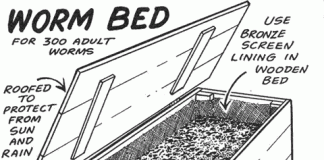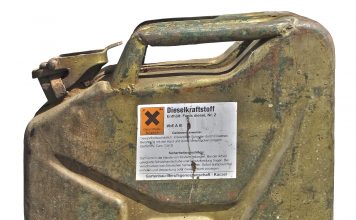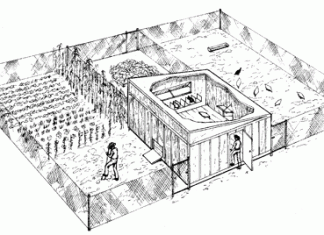| Issue #85 • January/February, 2004 |
Most of us who read BHM agree that self sufficient living can be debt free, but we also worry about inflation. The word inflation is used to describe a general rise in prices. If prices continue to rise and you make no attempt to control your finances or limit your spending it can only lead to a substantial reduction in your living standards or to increased debt. A modest increase in prices over an extended period of time means the dollar buys less, so it costs more to maintain the current living standard. Living debt free gives you full control over money earned, saved, or spent.
Did you know that just a 3 percent increase in inflation annually over an extended period of 14 years will result in a 50 percent increase in prices. This may not seem like much until you consider paying 50 percent more for your home, auto, monthly food bill, and major appliances. However, by cutting back on expenses, using money wisely, having little or no debt and knowing how to conserve in all areas can be a rewarding living experience, not one to be feared.
In the 1970s bread cost 69 cents a loaf. Today you can walk into any store and see loaves of bread on the shelves that cost over two dollars and as much as three dollars. This is inflation. However, there is still bread to be had for 69 cents, but you must know where to find it.
Bread thrift stores are operated by major bakeries around the country. Day old bread removed from the grocers’ shelves is returned to the bakery and sold to the public through these outlets. Here you will find bread and bread products like croutons, pies, and donuts that have been picked up at the markets when the bread man made his delivery. These stores sell not only bread, but cookies, rolls, pies, cakes, and other snack items. They offer weekly specials such as a free loaf of bread with every three loaves purchased, or half price Tuesdays. Such an outlet for a bakery offers its products at less than half of what the item would have sold for on the retailer’s shelf.
When inflation hits the grocer’s shelves we watch prices rise on frozen and canned vegetables. But even though inflation is affecting the vegetable processing industry, it will not effect what you buy fresh or grow yourself. A wise shopper will always find alternatives to inflated prices. Learn where the bargains are and what is in season at the supermarket.

Train yourself to comparison shop. A comparison shopper knows where the best bargains are located, so when a particular item is needed in the household, that is where you head to save money.
Comparison shopping can be done while shopping for needed items. Say you are shopping for a pair of pants and make several stops at different shops in a mall to get the best deal. As you walk through the shops, note the prices of other items such as shirts or blouses that are displayed near the pants, and compare the prices at one shop with the prices at another. Not the sale price, but the regular retail price. Also check the mark down racks to learn where the best bargains can be found, so that some time in the future when you need a shirt or blouse you can return to the lowest priced shops.
This carries over into grocery shopping as well. Sometimes a store will have reasonable prices on quality meats and dairy products while just across the street the prices are better on frozen items and produce. Shop accordingly. Purchase your meat and dairy products at one store, then cross the street and purchase frozen foods and produce.
There are also bargain outlets that carry damaged freight, dented cans, discontinued merchandise. Learn where these are located in your area and shop there first. Then with a list in hand, shop at regular retail outlets.
When buying dented cans always check to make sure there is no bulge to the can. There is enough space in a can to accept a dent or two, but if the can appears to bulge on the top or bottom, or has any leakage, avoid it like the plague. This is evidence of spoilage. You should also check your home canned produce on occasion for this telltale sign. Don’t use any food from a container where the lid is bulged or the seal is popped.
Save money by shopping less frequently. If you change from grocery shopping once a week to once a month, you will cut your grocery bill considerably. Sticking to a list will get you in and out of the store with minimum cost. To do this you need to keep a supply of staples on hand. Basic staples include flour, grains, spices, sugar, coffee, tea, macaroni, beans, and things that store in your cupboards. Since you know you will be using these items you can stock up when they’re on sale and they’ll keep for months. Plan a large pantry or storage area to hold your staples.
Even if you don’t plan on using some items, they come in handy when you run out of something else. For example if you keep a package of powdered milk on hand you can use it for cooking when you run out of fresh milk, saving a trip to the store.
Never go shopping without your list, and then buy only those items on the list. This is of primary importance when you find you have to visit a store between your monthly shopping trips. Not only will this cut down on the number of trips to the store, but it will save time, gasoline, and money.
Most new clothing is overpriced because the manufacturer knows shopping has become a means of entertainment for the average consumer, the public is fashion conscious, and few people pay with cash. But these same manufacturers also have returned or flawed merchandise which they can’t sell through a regular retail shop. This merchandise is sent to a discount house where it is distributed to the public at below wholesale prices. If you browse the racks of these outlets, sooner of later you will find the correct size and color you want. These outlets also carry household items, and I prefer to shop at an outlet rather than a neighboring store that sells imports because of the difference in quality. Some national outlets are Ross, Name Brand Clothing, and Burlington Coat Factory.
Don’t shop with a credit card. Because credit card shopping offers instant gratification, the average consumer buys with plastic never considering how much is being spent or how much the interest will add to the cost. Both the manufacturer and the shop owner depend on you carrying a credit card into the store, and they know that if a designer changes the fashion tomorrow the consumer is there to buy the new design. Since it takes seven years for a style to become outdated, why hurry to buy it; with care, your clothes should last many years except of course in the case of growing children.
Thrift and bargain stores offer the latest styles as well as older styles. The problem here is finding the size or color of your choice. Remember, it doesn’t pay to purchase new since once clothing is washed it becomes used. Many thrift stores are also consignment stores and take in designer clothing which is resold at a fraction of the original cost. Look for these resale shops in your area and take time to browse the racks.
Yard sales
You can also save by shopping at yard sales. Dressing children is fun when you shop at these neighborhood sales. Try driving to a big city and spending the day yard saling. You’ll be amazed at the dollars saved and the merchandise encountered. If you pack a lunch you’ll enjoy a picnic in a park. Tools, furniture, toys and games, dishes, bedding, appliances, computers, sound equipment, and clothing are just a few of the things you will find at yard sales.
There’s usually a large selection of outgrown clothing from the homeowner’s children. Just remember to check for spots and stains. Rips in seams can be mended and will allow you to get the item at a lower cost. Don’t be afraid to ask the homeowner to take a lower price than what is marked on the garment; after all, yard sales are meant to be fun and haggling over price adds to the fun.
Middle income neighborhoods have the best selection of items to choose from at the most reasonable price. High income neighborhoods sometimes overprice items, but the quality is higher. Remember we are here to save money, not pay retail. Since many of the high income homeowners shop at only the highest priced stores they don’t realize the same articles can be had for less had they shopped elsewhere.
Don’t overlook the classifieds. You can often find what you’re looking for advertised in the newspaper or over the Internet.
Shop the clearance racks. Clearance sales are a means for merchants to move excess inventory, overstocked supplies, out of season items, and to make room for new shipments arriving. Take advantage of any and all sales for things you need whenever possible. The savings add up.
Not only should you consider shopping at sales for items you need, but as you shop, consider what items will be needed in the future. For example, almost all stores carry after-Christmas sales. This is an excellent opportunity to purchase items. These don’t necessarily have to be put aside until next Christmas, but can be kept in a drawer or closet until needed.
By planning ahead and spending wisely you will almost never pay retail—you can beat inflation and help your dollar go further.












